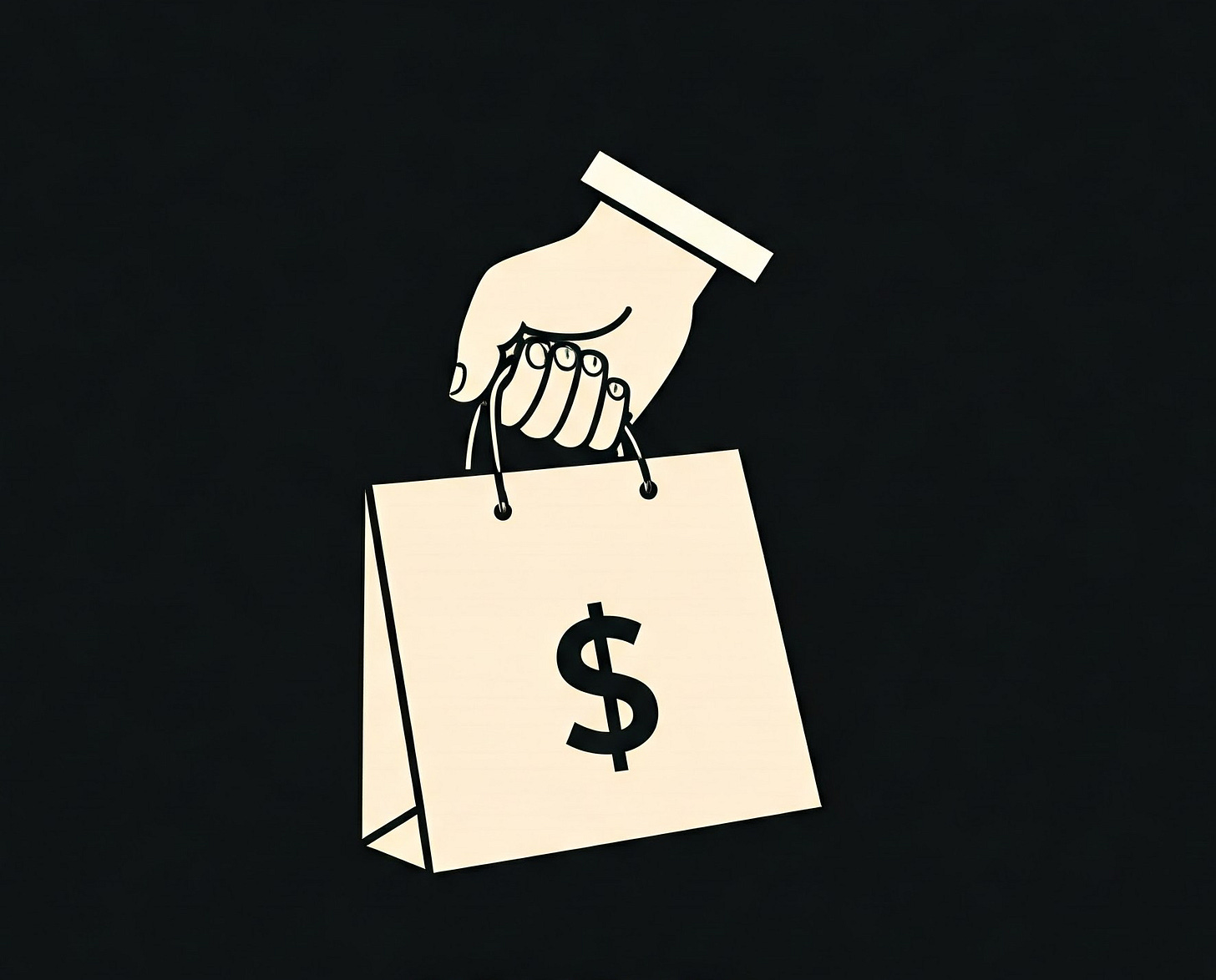Why We Spend and How to Stop Impulse Buying?
the psychology of money
Welcome to Thursday! It’s almost the end of the week, but there’s still plenty of time to make strides toward your goals. Let’s stay focused and finish the week strong.
But before we start, here’s a dose of positivity for you:
‘The only limit to our realization of tomorrow is our doubts of today’
Now, let’s get started…
The neuroscience of impulse buying
Impulse buying often begins in the brain. Studies in neuroscience have shown that when we make a purchase, especially an unplanned one, our brain releases dopamine - often referred to as the "feel-good" hormone. This spike in dopamine provides an immediate sense of pleasure, similar to eating your favorite food or winning a small reward. The instant gratification from a purchase can create a cycle where the brain seeks that rush again and again, which is why we often find ourselves making impulsive decisions at the checkout counter or online.
Interestingly, the part of our brain responsible for impulse control, the prefrontal cortex, can become overridden by these emotional triggers, especially in high-stress environments. That means, when we're tired, anxious, or emotionally drained, our ability to resist buying on impulse is significantly weakened.
The role of ‘cognitive dissonance’: The tug-of-war between desire and rationality
Cognitive dissonance plays a key role in our spending decisions. This psychological phenomenon occurs when our actions don’t align with our beliefs or values. For instance, we might believe we should save money for the future, yet we find ourselves splurging on a new gadget we don’t really need.
This creates internal discomfort, leading us to justify the purchase in our minds, often with irrational reasons like, "I deserve it" or "It’s on sale, so it’s a great deal!"
This dissonance can make it hard to break free from impulse buying because we try to rationalize our decisions post-purchase. The key to overcoming this is becoming aware of the dissonance and using it to guide our choices, instead of allowing the justification to take control.
How external factors influence our spending
It's not just our brains that influence how we spend; external triggers also play a significant role. Retail environments, for instance, are meticulously designed to encourage spending. From the layout of stores to the placement of products, everything is aimed at nudging us toward buying. Online shopping is even more potent, with limited-time offers, free shipping deals, and personalized recommendations using our browsing history. These factors manipulate our sense of urgency, often leading us to make purchases we wouldn't normally consider.
Social comparison is another powerful external force. Thanks to social media, we're constantly exposed to the curated lives of others - vacations, gadgets, fashionable wardrobes, and more.
This “keeping up with the Joneses” mentality, exacerbated by influencers and curated content, fosters a fear of missing out (FOMO). We start believing that these material goods will somehow bring us happiness or elevate our status, which triggers impulsive purchases as we try to fit into the idealized world around us.
How to break the cycle of impulse buying?
Recognizing the psychology behind our impulse buying is the first step to managing it. However, breaking the cycle requires more than awareness; it demands actionable steps rooted in both practical strategies and a deep understanding of our emotional triggers. Here are some powerful techniques to help curb impulse spending:
1. Embrace the ‘10-10-10 rule’
The 10-10-10 rule is a simple yet effective method for avoiding impulse purchases. When you feel the urge to buy something impulsively, ask yourself:
Will I still want this in 10 minutes?
Will I still care about it in 10 months?
Will I remember it in 10 years?
This exercise helps shift your focus from the immediate gratification of purchasing to the long-term impact of your decision.
2. Implement the 30-day challenge for big purchases
For significant, non-essential purchases, adopt a 30-day rule. If you find yourself eyeing something that isn’t urgent or a necessity, put it on a wishlist and wait for 30 days before buying it.
This cooling-off period allows the initial emotional impulse to fade, and often, after a month, you'll realize you no longer desire the item. This challenge can significantly reduce buyer’s remorse and unnecessary clutter in your life.
3. Set boundaries for marketing exposure
If social comparison or FOMO influences your spending, it’s time to set boundaries around your exposure to social media and advertisements. Limit your time on platforms that trigger the urge to buy, or unfollow influencers whose content leads to unnecessary purchases. By curating your digital environment, you reduce the influence of others on your spending decisions, allowing you to act based on your needs, not external pressures.
By understanding these influences, you can take proactive steps to make more mindful, intentional financial choices.
So, that’s it for today.
See ya 👋


